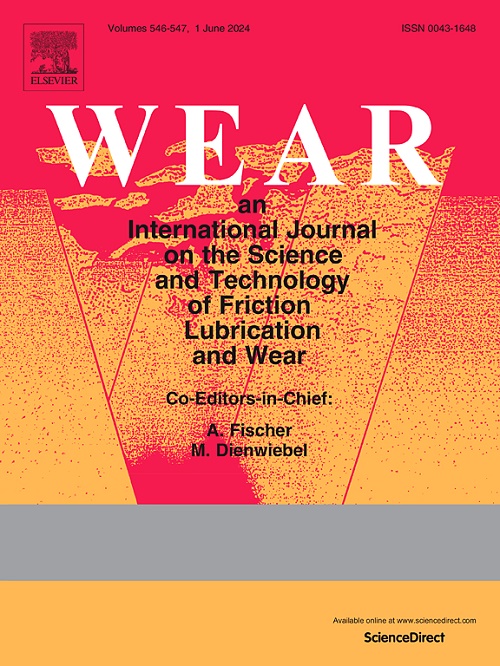Mechanism analysis and prediction of bull-nose cutter wear in multi-axis milling of Ti6Al4V with TiAlN coated inserts
IF 5.3
1区 工程技术
Q1 ENGINEERING, MECHANICAL
引用次数: 0
Abstract
Cutter wear is an unavoidable issue during the milling of difficult-to-machine materials such as Ti6Al4V, which severely affects cutting performance and surface quality. Especially in multi-axis milling, the complex and irregular contact area between cutter and workpiece increases the difficulty of wear prediction. This paper proposes a flank wear prediction model of bull-nose cutter in the multi-axis milling process of Ti6Al4V with TiAlN coated inserts. The cutter workpiece engagement (CWE) zone is analyzed and the wear contact length of cutting edge is obtained, which reveals the uneven distribution characteristics of flank wear. After that, by analyzing the geometric profile properties of cutter wear in multi-axis milling, abrasive and adhesive wear, a flank wear prediction model that takes coating hardness and cutting temperature model into account is established. The proposed model is calibrated and validated by the multi-axis milling experiment of Ti6Al4V with TiAlN coated inserts. The results show that the novel wear model has high accuracy with an average percentage error of 12.76 % and can accurately and quickly predict flank wear in multi-axis milling of Ti6Al4V. Finally, the cutter wear mechanism and chip formation are analyzed, which show that the main wear mechanism is abrasive wear and adhesive wear, and there was no obvious oxidation wear.
使用 TiAlN 涂层刀片多轴铣削 Ti6Al4V 时牛鼻子铣刀磨损的机理分析与预测
刀具磨损是铣削难加工材料(如 Ti6Al4V)时不可避免的问题,严重影响切削性能和表面质量。特别是在多轴铣削中,刀具与工件之间的接触区域复杂且不规则,增加了磨损预测的难度。本文提出了使用 TiAlN 涂层刀片对 Ti6Al4V 进行多轴铣削过程中牛鼻子铣刀侧面磨损预测模型。分析了刀具工件啮合(CWE)区,得到了切削刃的磨损接触长度,揭示了侧面磨损的不均匀分布特征。随后,通过分析多轴铣削中刀具磨损的几何轮廓特性、磨料磨损和粘着磨损,建立了一个考虑涂层硬度和切削温度模型的刀面磨损预测模型。通过使用 TiAlN 涂层刀片对 Ti6Al4V 进行多轴铣削实验,对所提出的模型进行了校准和验证。结果表明,新的磨损模型具有较高的精度,平均百分比误差为 12.76%,能够准确快速地预测 Ti6Al4V 多轴铣削过程中的侧面磨损。最后,对刀具磨损机理和切屑形成进行了分析,结果表明主要磨损机理是磨料磨损和粘着磨损,没有明显的氧化磨损。
本文章由计算机程序翻译,如有差异,请以英文原文为准。
求助全文
约1分钟内获得全文
求助全文
来源期刊

Wear
工程技术-材料科学:综合
CiteScore
8.80
自引率
8.00%
发文量
280
审稿时长
47 days
期刊介绍:
Wear journal is dedicated to the advancement of basic and applied knowledge concerning the nature of wear of materials. Broadly, topics of interest range from development of fundamental understanding of the mechanisms of wear to innovative solutions to practical engineering problems. Authors of experimental studies are expected to comment on the repeatability of the data, and whenever possible, conduct multiple measurements under similar testing conditions. Further, Wear embraces the highest standards of professional ethics, and the detection of matching content, either in written or graphical form, from other publications by the current authors or by others, may result in rejection.
 求助内容:
求助内容: 应助结果提醒方式:
应助结果提醒方式:


